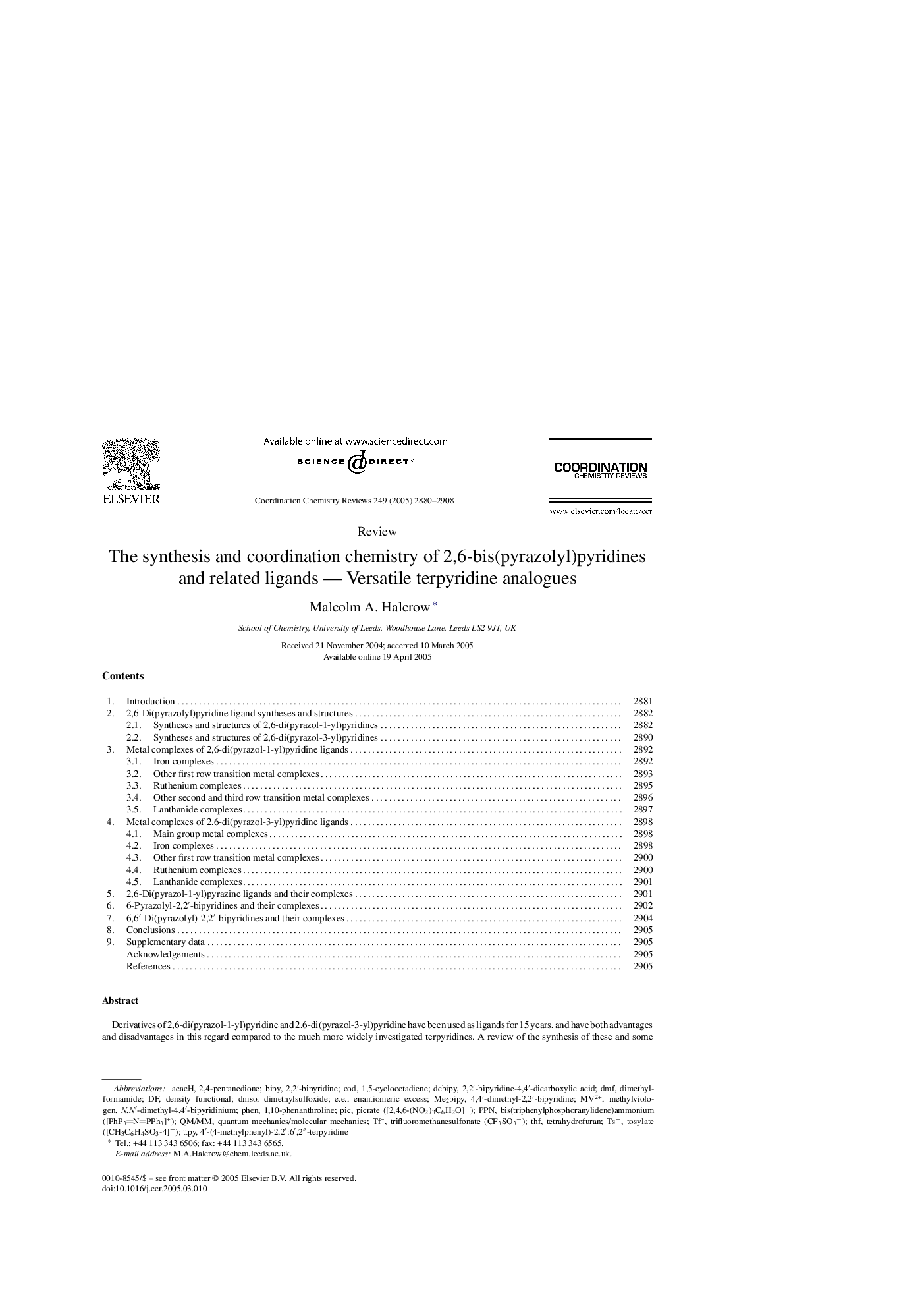| Article ID | Journal | Published Year | Pages | File Type |
|---|---|---|---|---|
| 1300768 | Coordination Chemistry Reviews | 2005 | 29 Pages |
Abstract
Derivatives of 2,6-di(pyrazol-1-yl)pyridine and 2,6-di(pyrazol-3-yl)pyridine have been used as ligands for 15 years, and have both advantages and disadvantages in this regard compared to the much more widely investigated terpyridines. A review of the synthesis of these and some related ligand types, and a survey of their complex chemistry, are presented. Highlights of the latter include luminescent lanthanide compounds for biological sensing, and iron complexes showing unusual thermal and photochemical spin-state transitions.
Related Topics
Physical Sciences and Engineering
Chemistry
Inorganic Chemistry
Authors
Malcolm A. Halcrow,
